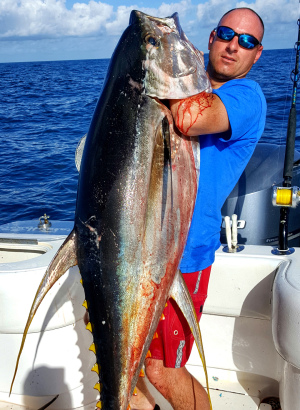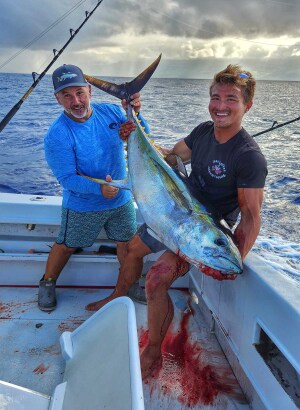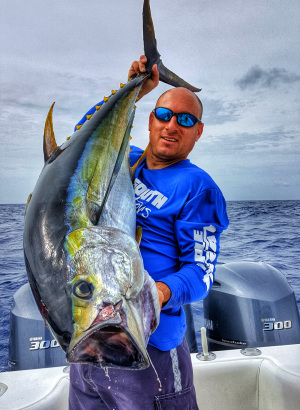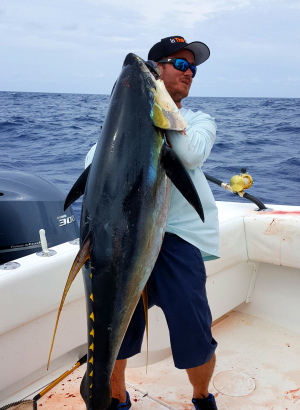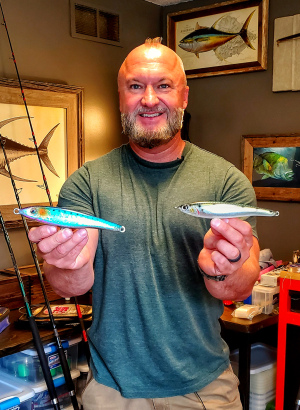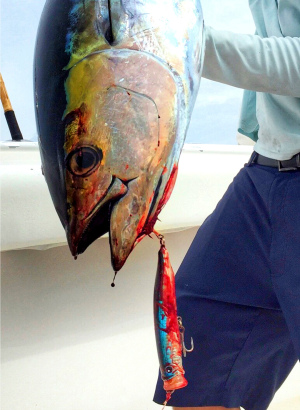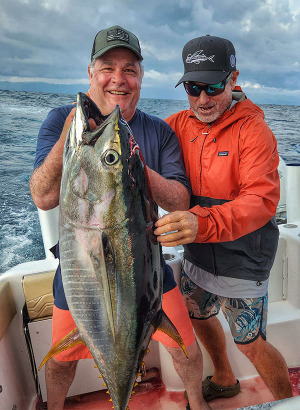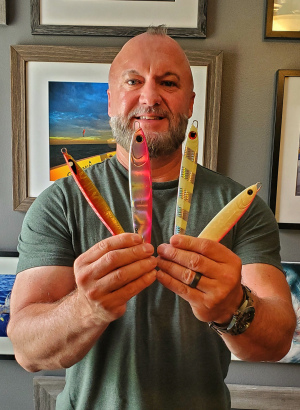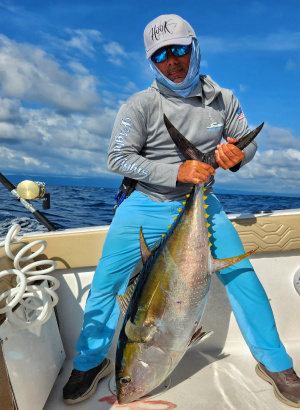Discover the secrets of successful yellowfin tuna fishing by leveraging porpoise and dolphin schools. Legendary big game fisherman Mike Hennessy shares his expertise on identifying different species, positioning your boat, and presenting bait effectively. Learn how to read marine mammal behavior to locate and catch more tuna on your next offshore adventure.
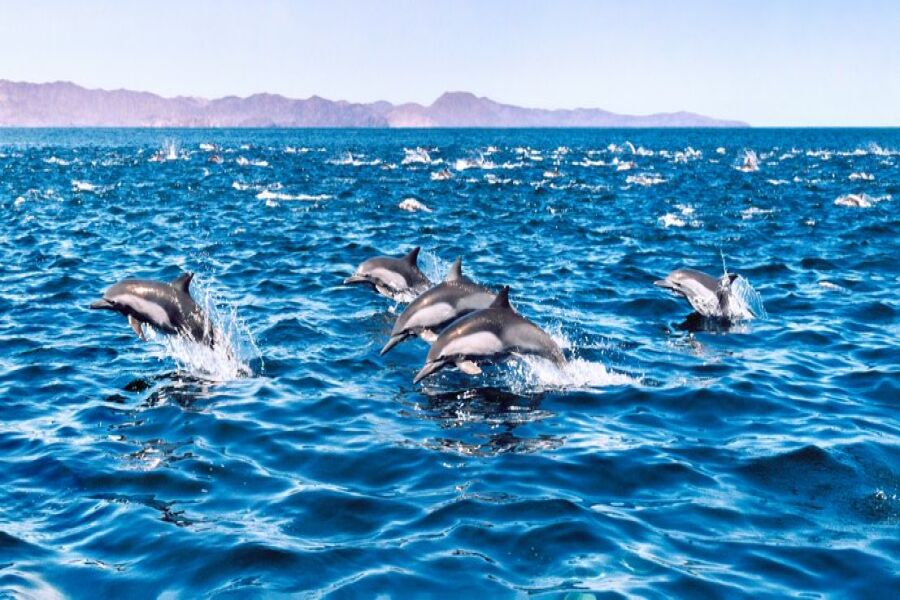
Reading Porpoise Schools for Better Tuna Fishing
Article Highlights
- Harness porpoise and dolphin schools to find yellowfin tuna
- Identify three key porpoise/dolphin species linked to tuna
- Learn species-specific fishing strategies
- Perfect your boat positioning and bait presentation
- Benefit from Mike Hennessy's expert tuna fishing wisdom
Yellowfin tuna present a formidable challenge to anglers worldwide. Yet, a select group of fishing veterans holds a coveted key to consistent success: the art of reading porpoise and dolphin schools. This article unveils the complex dance between these marine mammals and prized yellowfin tuna, offering a treasure trove of knowledge for fishermen of all skill levels.
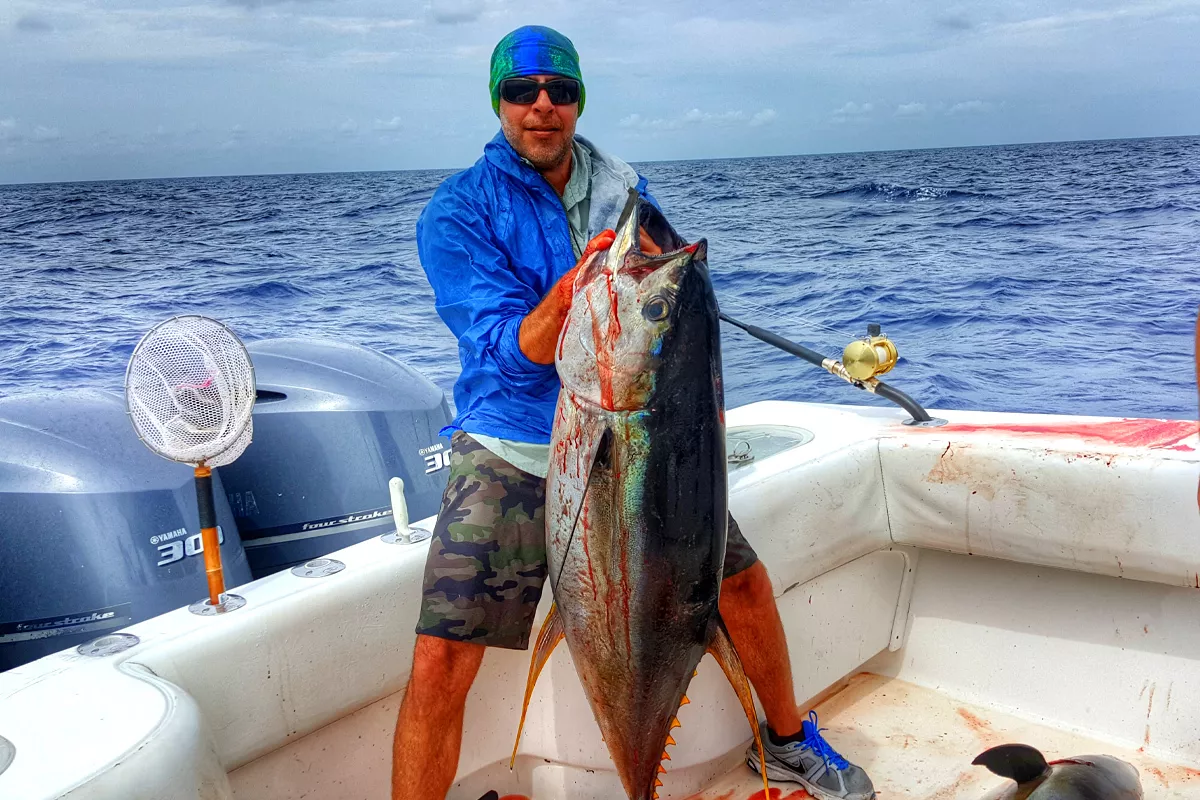
The Porpoise-Tuna Connection
Yellowfin tuna (Thunnus albacares), renowned for their powerful fights and exquisite flavor, have long captivated the hearts of anglers and seafood enthusiasts alike. These magnificent creatures, capable of reaching weights over 300 pounds, are not just prized catches but also play a crucial role in oceanic ecosystems. Their association with various species of porpoises and dolphins has intrigued marine biologists and fishermen for generations, offering a unique window into the complex interactions of marine life.
This symbiotic relationship between yellowfin tuna and cetaceans is a fascinating example of nature's intricate balance. While observed in oceans worldwide, from the Atlantic to the Indian Ocean, it reaches its zenith along the Pacific coast of Central America. Here, the convergence of nutrient-rich currents, abundant prey fish, and diverse marine mammal populations creates an ideal environment for this partnership to flourish.
Understanding the behavior of porpoise and dolphin schools is key to successful yellowfin tuna fishing in the Pacific.
Mike Hennessy, legendary biggame fishermanThe Three Types of Porpoises and Dolphins
According to Hennessy, there are three primary types of porpoises and dolphins commonly associated with yellowfin tuna schools in the Eastern Pacific:
- White belly porpoise
- Spinner dolphin
- Spotted dolphin
White Belly Porpoise
They get in a long line and work as a pack, like a line of soldiers moving forward. They move fast and erratically.
Mike Hennessy- Reading the School: Observing the overall direction and speed of the porpoise school is crucial. Look for subtle cues such as surface disturbances, changes in swimming speed, or sudden directional shifts.
- Anticipating Movements: Based on the school's current trajectory, try to predict where they might head next. This often requires quick thinking and the ability to adjust your strategy on the fly.
- Boat Positioning: Proper boat placement is perhaps the most critical factor when fishing near white belly porpoises. Ideally, you want to position your vessel ahead of the school's path, but not so close as to spook them.
- Stealthy Approach: These mammals are highly sensitive to engine noise and water disturbance. When approaching a school, do so cautiously, often using a drift or minimal power to avoid alarming them.
- Bait Presentation: Once in position, the timing and location of bait deployment are crucial. Aim to place your baits where you anticipate the tuna will be, typically just ahead of or alongside the porpoise school.
- Patience and Adaptability: Given the unpredictable nature of white belly porpoises, be prepared to reposition frequently. Patience is key, as it may take several attempts to find the right spot.
By mastering the skills needed to fish near white belly porpoises, anglers not only increase their chances of landing yellowfin tuna but also gain a deeper appreciation for the complex dynamics of marine ecosystems. This knowledge contributes to more sustainable and ethical fishing practices, ensuring that future generations can continue to enjoy the thrill of tuna fishing in harmony with these fascinating marine mammals.
Spinner Dolphin
Spinner dolphins (Stenella longirostris) have earned a special place in the hearts of tuna fishermen worldwide, and for good reason. Their distinctive behavior and consistent movement patterns make them invaluable allies in the pursuit of yellowfin tuna. Unlike their more erratic cousins, the white belly porpoises, spinner dolphins exhibit a predictability that seasoned anglers like Mike Hennessy have come to rely on.
Spinner dolphins track well together, in a straight line. It makes baiting the tuna a lot easier.
Mike HennessyThis linear movement pattern is a defining characteristic of spinner dolphin schools. They typically travel in a cohesive group, maintaining a steady course that can stretch for miles. This behavior offers several advantages to tuna fishermen:
- Predictable Trajectories: The straight-line movement of spinner dolphins allows anglers to anticipate their path with greater accuracy. This predictability is crucial for proper boat positioning and bait presentation.
- Easier Tracking: Unlike the erratic movements of other species, spinner dolphins can be followed more easily, even at a distance. This allows fishermen to plan their approach and fishing strategy well in advance.
- Consistent Tuna Association: Spinner dolphins have a strong and reliable association with yellowfin tuna. This relationship is so dependable that experienced anglers often refer to spinner dolphin schools as "tuna pointers."
One of the most critical pieces of information Hennessy shares is the typical positioning of tuna in relation to the spinner dolphin school:
"When fishing near spinner dolphins, remember that the tuna typically swim ahead of the dolphin school."
- Tackle Preparation: Anglers must be prepared with a range of tackle options to handle everything from smaller school-sized tuna to trophy-class fish.
- Bait Selection: The presence of various tuna sizes means that a variety of bait types and sizes may be effective. Smaller baits might attract the school-sized fish, while larger offerings could tempt the trophy specimens.
- Fighting Strategies: Being ready for anything from a quick skirmish with a 20-pounder to an extended battle with a 200-pound giant requires mental preparation and physical endurance.
- Conservation Considerations: The presence of both juvenile and mature tuna in the same area highlights the importance of responsible fishing practices to ensure the sustainability of the yellowfin tuna population.
Hennessy offers a pro tip for maximizing success when fishing near spinner dolphins:
"Pay attention to the dolphins' behavior. If you see them getting more active, leaping and spinning more frequently, it often indicates that they're feeding. That's when the tuna action can really heat up."
Spotted Dolphin
You have to get out in front of them. You can also use much larger baits with spotted dolphin, as larger tuna tend to be with the spotted dolphin.
HennessyThis insight reveals several key factors that make fishing around spotted dolphins both challenging and potentially rewarding:
- Precise Positioning: Unlike the larger schools of spinner dolphins or white belly porpoises, spotted dolphin groups require more accurate boat placement. The smaller school size means a more concentrated area where tuna are likely to be found.
- Anticipatory Tactics: Getting "out in front" of the spotted dolphins requires anglers to read the school's movement and anticipate their trajectory. This often involves positioning the boat well ahead of the dolphin school's path.
- Larger Baits for Bigger Fish: Hennessy's advice to use larger baits is particularly noteworthy. This suggestion is based on the observation that spotted dolphins are often associated with larger, trophy-sized yellowfin tuna.
The association between spotted dolphins and larger tuna is a phenomenon that has made these particular dolphin schools highly prized among serious big game anglers. Several factors contribute to this relationship:
- Feeding Patterns: Larger tuna and spotted dolphins often target similar prey species, leading to a natural association in productive feeding areas.
- Offshore Habits: Spotted dolphins tend to prefer slightly more offshore waters compared to some other species, coinciding with the habitat of larger, mature yellowfin tuna.
- School Dynamics: The smaller, more agile schools of spotted dolphins may be better suited to keeping pace with the movements of larger, faster-swimming tuna.
For anglers seeking trophy yellowfin, this association presents a golden opportunity. However, it also comes with specific challenges and considerations:
- Tackle Requirements: When targeting potentially larger tuna, anglers need to be equipped with heavier tackle, stronger lines, and more robust reels capable of handling powerful runs from trophy-sized fish.
- Bait Selection: As Hennessy suggests, larger baits are often more effective. This might include large live baits like skipjack or mackerel, or substantial artificial lures designed to mimic larger prey items.
- Fighting Techniques: Battling a trophy yellowfin requires different strategies compared to smaller fish. Anglers need to be prepared for extended fights and have the stamina to match these powerful adversaries.
- Conservation Awareness: Targeting larger, often mature tuna requires a heightened sense of conservation responsibility. These fish are crucial for population sustainability, and catch-and-release practices should be considered when appropriate.
Hennessy offers an additional tip for fishing around spotted dolphins:
"Watch for sudden changes in the dolphins' behavior. If they start to move more erratically or increase their speed, it often means they've encountered a school of bait. That's when you want to have your lures in the water."
Tactics and Techniques for Yellowfin Tuna Fishing
Boat Positioning
- Observe the school's overall direction for several minutes before making your move.
- Position your boat 100-200 yards ahead of their perceived path.
- Be prepared to make quick adjustments as the school may change direction suddenly.
- Use your engine sparingly to avoid spooking the porpoises.
"With white bellies, you're always playing a game of prediction," Hennessy explains. "You want to be where they're going to be, not where they are now."
Spinner Dolphins:
Spinner dolphins offer more predictability, but proper positioning is still crucial:
- Place your boat 200-300 yards ahead of the dolphin school's path.
- Keep in mind that tuna often swim ahead of the dolphins.
- Maintain a parallel course to the school's movement.
- Be prepared to reposition if the school changes direction, though this is less common than with white belly porpoises.
Hennessy advises, "With spinners, you've got a bit more time to set up. Use that time wisely to get your baits in the perfect position."
Spotted Dolphins:
Spotted dolphins require a more anticipatory approach:
- Position your boat well in advance of the school, often 300-400 yards ahead.
- Use your fish finder to locate bait balls or schools of smaller fish that may attract both the dolphins and tuna.
- Be patient and allow the school to approach your position.
- Prepare larger baits, as bigger tuna are often associated with spotted dolphins.
- Wind and Current Considerations: Always factor in wind direction and current when positioning your boat. These elements can affect both your drift and the movement of your baits.
- Sun Position: Try to position yourself so that the sun is at your back. This improves visibility and reduces glare on the water surface.
- Stealth Mode: Whenever possible, use your engine minimally. Excessive noise can spook both the marine mammals and the tuna.
- Safety First: Always be aware of other boats in the area. Maintain safe distances and follow all maritime rules and regulations.
- Respect Marine Life: Remember that these dolphins and porpoises are protected species. Never position your boat in a way that could harass or harm them.
- Flexibility is Key: Be prepared to adjust your position frequently. Successful tuna fishing often involves a constant dance of repositioning and anticipation.
Hennessy offers a final piece of advice on boat positioning:
"The key is to think like the tuna. They're following the dolphins because that's where the food is. Your job is to present your bait where the tuna think the next meal is coming from, not where it is right now."

Bait Presentation
The art of bait selection and presentation is a critical component in the pursuit of yellowfin tuna, especially when fishing around different species of dolphins and porpoises. Mike Hennessy, drawing from his vast experience, provides invaluable insights into this crucial aspect of tuna fishing.
Bait Size and Species Association
White Belly Porpoises and Spinner Dolphins:
When fishing around these species, Hennessy recommends using smaller baits. This strategy is based on several factors:
- Smaller tuna often associate with these dolphin species
- These dolphins typically feed on smaller prey items
- Smaller baits can mimic the natural forage in these areas
"With white bellies and spinners, think sardines, small mackerel, or flying fish," Hennessy advises. "You want your bait to blend in with what's naturally in the water."
The recommendation shifts dramatically when fishing near spotted dolphins:
- Larger yellowfin tuna often associate with spotted dolphin schools
- These tuna are typically targeting larger prey items
Hennessy suggests: "When you're around spotted dolphins, don't be afraid to go big. Large live baits like skipjack or bonito can be killer. If you're using artificials, big marlin lures or large poppers can draw strikes from trophy yellowfin."
Bait Presentation Techniques
Regardless of the bait size, proper presentation is crucial. Hennessy emphasizes several key points:
- Natural Appearance: Present your bait in a way that mimics the behavior of the tuna's natural prey. This might involve slow-trolling live baits or using a stop-and-go retrieve with artificial lures.
- Depth Control: Pay attention to where in the water column the tuna are feeding. Surface activity might call for topwater presentations, while deeper feeding might require weighted baits or downriggers.
- Speed Adjustment: Match your bait's movement to the speed of the dolphin school. Too fast, and you'll outpace the tuna; too slow, and your bait might not look natural.
The Art of the Hookset
Perhaps the most critical piece of advice Hennessy offers is regarding the moment of truth - when a tuna takes the bait:
"Patience is everything when it comes to hooking a yellowfin. Let them fully take the bait before setting the hook. It's the hardest thing to learn, but it makes all the difference."
This patience is crucial for several reasons:
- Yellowfin tuna often "window shop" baits before fully committing
- A premature hookset can pull the bait away from the fish
- Allowing the tuna to turn with the bait increases the chances of a solid hookup
Additional Bait Considerations
- Live vs. Artificial: While live baits are often preferred, artificial lures can be highly effective, especially when fish are actively feeding. Having both options available allows for adaptability.
- Scent and Color: In clear offshore waters, visual appeal is important. However, don't underestimate the power of scent. Using bait with strong natural odors or adding scent to artificial lures can increase your chances of success.
- Rigging: Proper rigging is crucial to natural bait presentation. For live baits, use bridle rigs or nose hooks to keep the bait swimming naturally. For dead baits, consider skip-baiting techniques to create an enticing action.
- Bait Rotation: Don't be afraid to switch baits if you're not getting bites. Sometimes, a change in size, color, or type of bait can trigger a feeding response.
Remember, there's no such thing as the perfect bait for all situations. The key is to be observant, adaptable, and always willing to learn. The tuna will tell you what they want; you just need to listen.
Mike HennessyMastering bait selection and presentation is a lifelong journey for tuna anglers. By understanding the associations between different dolphin species and tuna sizes, and by honing your skills in bait presentation and hookset timing, you'll significantly increase your chances of success in the challenging and rewarding world of yellowfin tuna fishing.
Tackle Selection
Tackle selection is a critical aspect of successful yellowfin tuna fishing, particularly when targeting fish associated with different dolphin and porpoise species. The right combination of rod, reel, line, and leader can make the difference between landing a trophy tuna and losing the fish of a lifetime. Mike Hennessy's insights on tackle selection, especially regarding leader choice, are rooted in years of experience and countless encounters with yellowfin tuna of all sizes.
Leader Selection
- Smaller tuna are often associated with these dolphin species
- Clearer water conditions may require more stealth
- Lighter leaders allow for more natural bait presentation
"For these scenarios, I typically use fluorocarbon leaders in the 40-60 pound test range," Hennessy advises. "It gives you enough strength to handle modest-sized tuna while remaining nearly invisible in the water."
Benefits of lighter leaders:
- Increased bait action and more natural presentation
- Better success in clear water conditions
- Ability to use lighter main line, allowing for longer casts and deeper trolling
When targeting larger tuna often found with spotted dolphins and some spinner dolphin schools, Hennessy suggests beefing up your leader:
- Bigger tuna require stronger leaders to withstand powerful runs and head shakes
- Heavier leaders provide abrasion resistance against the tuna's rough mouth and gill plates
"When I'm expecting big boys, I'll step up to 150 pound test fluorocarbon, or even mono in that range," Hennessy notes. "You need that insurance when you're dealing with 150-pound-plus yellowfin."
Benefits of heavier leaders:
- Increased strength for fighting larger fish
- Better abrasion resistance
- Ability to apply more pressure during the fight, potentially shortening fight times
Additional Tackle Considerations
- For smaller tuna: Medium to heavy action rods in the 20-30 pound class
- For larger tuna: Heavy action rods in the 50-80 pound class
- Consider length based on fishing method (shorter for stand-up, longer for chair fishing)
- Two-speed reels are preferred for their versatility, but robust spinning reels like the Diawa Saltiga work well
- For smaller tuna: 30-50 size reels
- For larger tuna: 50-80 size reels or even larger
- Ensure your reel has a smooth drag system and ample line capacity
Main Line:
- Braided line is popular for its thin diameter and lack of stretch
- Consider 50-80 pound test for smaller tuna
- Use 80-130 pound test or heavier for trophy-sized fish
Hooks:
- Circle hooks are increasingly popular for their conservation benefits and high hookup ratios
- Match hook size to bait size and expected fish size
- Consider using slightly larger hooks when targeting bigger tuna
Hennessy emphasizes the importance of matching your tackle to the specific fishing scenario:
Your tackle needs to be balanced. A heavy leader on light main line doesn't make sense. Neither does a super heavy rod with a small reel. Everything should work together as a system.
HennessyBy carefully considering your tackle selection, particularly your leader choice, you can significantly increase your chances of success when targeting yellowfin tuna around different dolphin and porpoise species. The right tackle not only improves your odds of landing fish but also enhances the overall fishing experience and contributes to the conservation of these magnificent game fish.
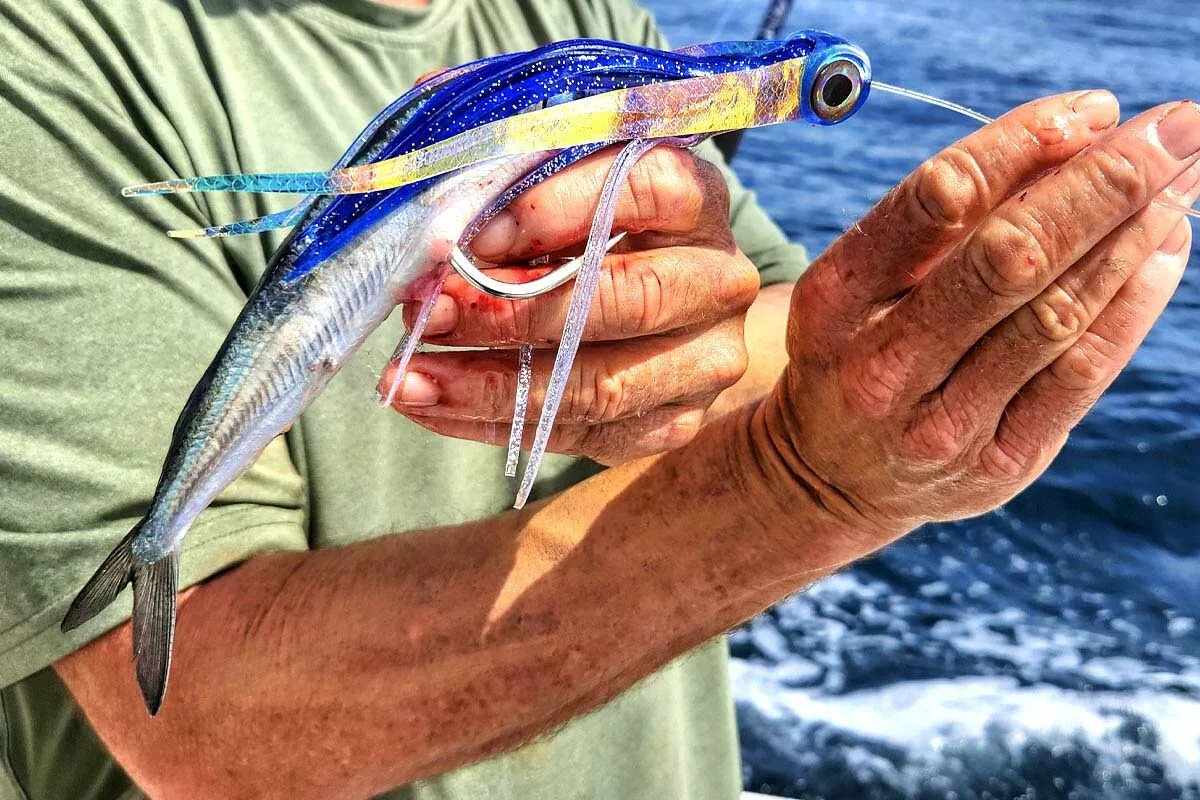
Preparation is Key
- Fish finders and sonar systems to detect bait balls and fish schools
- GPS for precise navigation and marking productive spots
- Radar for tracking bird activity, which often indicates the presence of feeding tuna
- Sea surface temperature (SST) charts to identify temperature breaks where tuna are likely to congregate
- Live baits like blue runners, mackerel, or skipjack in various sizes
- Dead baits rigged for trolling or chunking
- Artificial lures ranging from small feathers to large marlin lures
- Rods and reels in various sizes, from 20-pound class for smaller tuna to 80-pound and up for trophy fish
- A selection of leader materials in different strengths
- An assortment of hooks, including circle hooks for conservation-minded anglers
- Accessory items like gaffs, fighting belts, and gloves
Lastly, the importance of knot-tying skills cannot be overstated. The strongest tackle in the world is useless if your knots fail under pressure. Spend time practicing essential knots like the Palomar, Uni, and Bimini Twist. Ensure you can tie these knots quickly and securely, even in challenging conditions like rough seas or low light.
Success in tuna fishing isn't just about what you do on the water. It's about the homework you do before you ever leave the dock. The more prepared you are, the better equipped you'll be to handle whatever the ocean throws at you.
Mike HennessyBy attending to these crucial preparatory steps, anglers set themselves up for success in the challenging and rewarding pursuit of yellowfin tuna. This holistic approach not only increases the chances of a successful catch but also enhances safety, efficiency, and overall enjoyment of the fishing experience.
Know Before You Go
Whether you're a seasoned angler or new to the world of offshore fishing, incorporating these techniques into your repertoire will undoubtedly lead to more exciting yellowfin tuna encounters and memorable days on the water.
Is it legal to fish for tuna near dolphin and porpoise schools?
In most areas, it is legal to fish near dolphin and porpoise schools. However, it's crucial to check local regulations and avoid harassing or disturbing the marine mammals.
What's the best time of day to find tuna associated with porpoise and dolphin schools?
While tuna can be found throughout the day, many anglers find early morning and late afternoon to be particularly productive times.
Do I need special equipment to fish for yellowfin tuna near porpoise and dolphin schools?
While specialized equipment can be helpful, standard offshore fishing gear is usually sufficient. Ensure you have a variety of leader strengths and bait sizes to adapt to different situations.
How close should I get my boat to the porpoise or dolphin school?
The ideal distance varies depending on the species and local conditions. Generally, you want to be close enough to present your bait effectively without disturbing the school. Never, never run over the school. Experience and local knowledge are key in determining the right positioning.
Are there any conservation concerns with this fishing method?
When practiced responsibly, fishing near porpoise and dolphin schools can be a sustainable method. However, it's important to follow best practices, avoid overfishing, and respect marine life to ensure the long-term health of both tuna and marine mammal populations.

